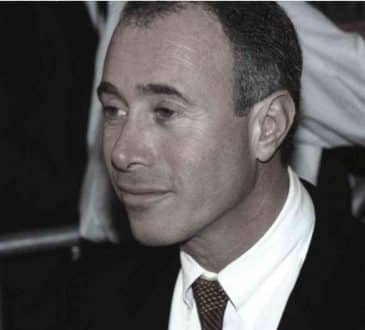The Three Ps: How to Ignite Performance in High-Stakes Environments

After weeks of waiting, the time had arrived. “This is it,” I thought. “I’m about to be inside a Blue Angels air show.” I was ready to take my first flight inside a blue-and-gold Blue Angels jet. And it wasn’t a practice flight.
My anticipation was physical and visceral. It was a bluebird day, with clear skies, and when we strapped in, I could look out over the thousands of spectators waving and cheering. The excitement made the hair on the back of my neck stand on end. Our canopies came down in unison. On engine start, I felt the familiar rumble of the turbines spooling up. We were lined up together, four jets on the runway packing 128,000 pounds of thrust, and we carried more horsepower than the entire starting lineup of the Indianapolis 500.
I looked to either side, saw that our wingtips were nearly overlapping, and thought to myself, “Holy crap, we’ve got a problem here.” I realized that if any one of us got a flat tire or the engine sucked up something from the runway, we’d end up with a lot of flames and metal, fast.
I was scared, but I wasn’t afraid. Why wasn’t I freezing up?
The answer was that I had a deep trust and faith that we were going to make it. But, I wondered, “Where did that come from?”
The Three Ps
I realized years later that although I was scared, I was able to carry on because I had an intense belief in three things. I call them the three Ps: people, process, and purpose.
First was my belief in the people around me. In addition to the six demonstration pilots at the air show that day, the Blue Angels include more than 110 individuals in support and maintenance roles. I knew that I could depend on everyone on that team.
Second was my belief in the process. The Blue Angels have been flying air shows since 1946. I’d been observing the team and knew that their processes had been continually refined and continue to be honed to this day.
Many organizations have those first two components in place—or are striving for them—but that’s not enough. The third P is a differentiator: purpose. There is a unique power in having a purpose and, I suggest, a purpose larger than self. That was the standard that held up each member of the Blue Angels, and it allowed us to achieve at the highest levels. Everything we did reflected our sense of purpose and our elevated responsibility.
Just how can you create this purpose in your own organization? By defining a CenterPoint.
The CenterPoint: Aligning Decisions with Purpose
Every maneuver the Blue Angels perform is based on a term called a CenterPoint. It’s a physical point in space, somewhere on the airfield, marked by a white tractor-trailer on land or a certain boat on the water. To members in the audience, this marker might not look important, but to pilots, the CenterPoint informs every decision we make.
Above all else, a CenterPoint is used as a reference point. When you give it the importance we did during an air show, it lends all your actions a sense of deeper focus. It provides you with a sense of “true north” that allows you to react quickly in changing situations. And it keeps individuals and teams focused on specific goals and outcomes.
Depending on your goals and your environment, CenterPoints take two different forms: tactical and strategic.
Tactical CenterPoints relate to immediate actions. This could be a release date for an IT solution or a sales goal. Key actions and priorities need to revolve around that CenterPoint. On top of it, stack all of the related elements and teams: sales, marketing, operations, HR, and administration. When everyone is aligned, the result is group execution by collective action. That’s exactly what sets elite teams, like the Blue Angels, apart.
Strategic CenterPoints, on the other hand, have a broader scope. These are represented by the occasions on which businesses define their core values or create mission statements. They inform not only how you’re executing but also why. They provide guidance for making decisions in any situation, big or small.
An example I use in many businesses is the customer. The customer is a CenterPoint that can clarify action in all kinds of situations. For instance, in healthcare, focusing on the patient becomes especially important, because you’re talking about patient-centered care and safety. When the focus of every action you take is directed at patient outcomes—at sustaining life with compassion—your actions take on a special kind of power.
Strategic CenterPoints are often focused on core values. When you stack your core values one on top of the other, your actions move through them, giving you clarity and purpose.
CenterPoint alignment binds your actions and ensures that even in changing, extreme conditions, there’s a benchmark that allows you to execute at the highest level. It unifies focus and allows your team to spot opportunities for advancement and improvement that would otherwise go unnoticed. Try it. This kind of central drive is common to high-performance teams and individuals of all types, in sports, in business—and in life.
Have you read?
# Most Startup Friendly Countries In The World.
# Countries With The Highest Average Life Expectancies In 2030.
# World’s Best Hospitality And Hotel Management Schools, 2019.
# Best Fashion Schools In The World For 2019. # Best Music Schools In The World For 2019.
Add CEOWORLD magazine to your Google News feed.
Follow CEOWORLD magazine headlines on: Google News, LinkedIn, Twitter, and Facebook.
This report/news/ranking/statistics has been prepared only for general guidance on matters of interest and does not constitute professional advice. You should not act upon the information contained in this publication without obtaining specific professional advice. No representation or warranty (express or implied) is given as to the accuracy or completeness of the information contained in this publication, and, to the extent permitted by law, CEOWORLD magazine does not accept or assume any liability, responsibility or duty of care for any consequences of you or anyone else acting, or refraining to act, in reliance on the information contained in this publication or for any decision based on it.
Copyright 2024 The CEOWORLD magazine. All rights reserved. This material (and any extract from it) must not be copied, redistributed or placed on any website, without CEOWORLD magazine' prior written consent. For media queries, please contact: info@ceoworld.biz
SUBSCRIBE NEWSLETTER








